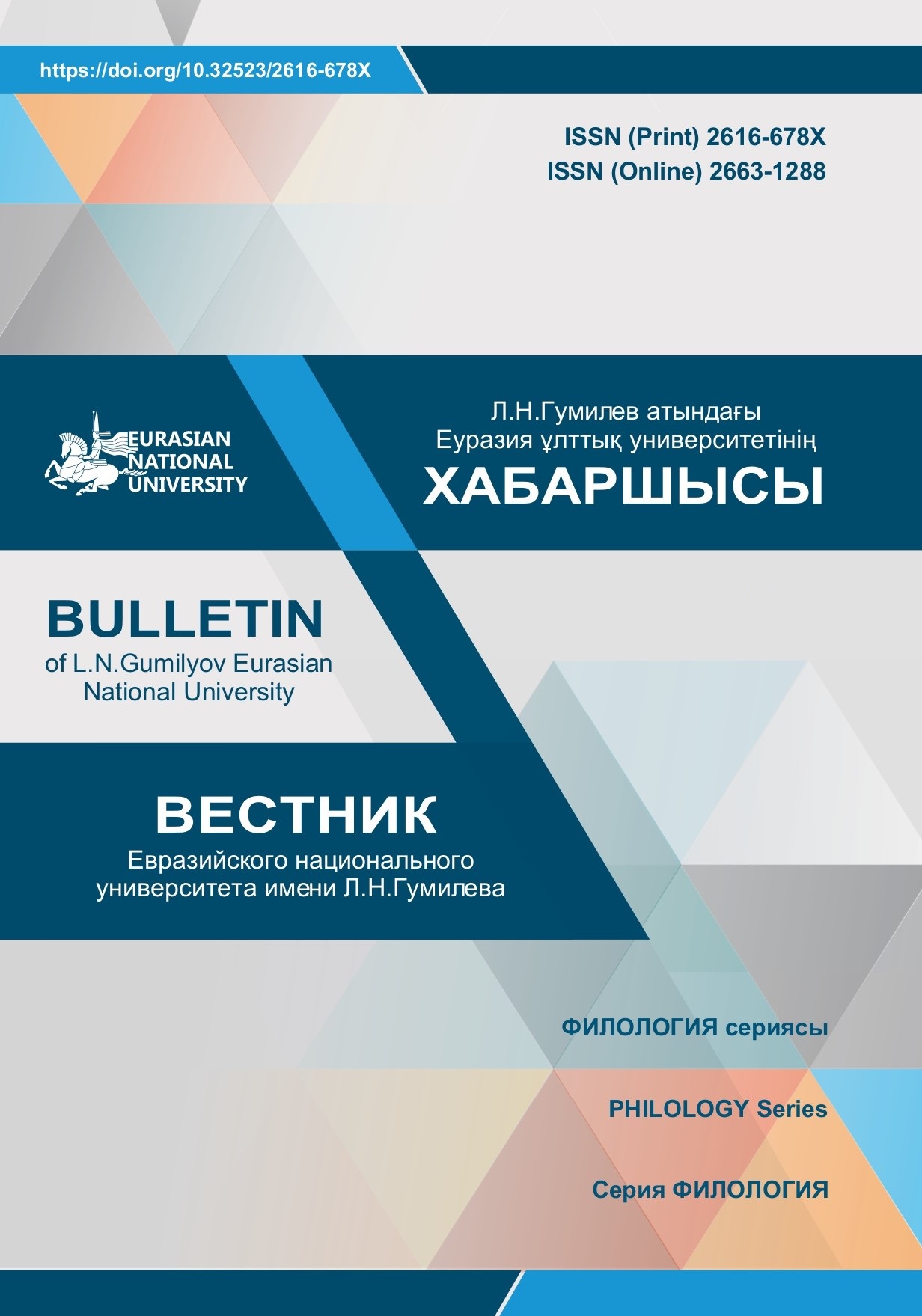Signs of the modality category in the structure of a literary text
Views: 168 / PDF downloads: 473
DOI:
https://doi.org/10.32523/2616-678X-2021-136-3-63-70Keywords:
modality, modal values, modal structure, text, inter-text communication, semantic networkAbstract
Currently, a special importance is attached to the comparative analysis of the category of
modality at the level of functional syntax within the main text and the context. This phenomenon has its
own structure; therefore, it allows us to determine the linguistic nature of several complex laws and
generalize independent theoretical problems.
The article analyzes a structural system of the category of modality based on a poetic text-a poem. This
leads to the differentiation of the formation of the internal semantic and structural connection of the
modal constructions of the entire work through the semantic connection of sentences that actualize the
modal meaning. In the structure of the text, such sentences have a purposeful function, they follow a
strict observance of the semantic relationship, the movement towards the phenomenon of integration,
the desire for semantic and structural integration, as well as the desire for orderliness. At the same time,
the horizontal and vertical connection of these structures at the text level, which actualizes the subjective
approach, is determined by specific examples. Attention is focused on the fact that the comparison of the
features of the category of modality on a functional basis, the concretization of the specifics of sentences
that actualize the subjective-modal meaning at the text level, their fixation from the semantic and
structural side, i.e. the desire for the integral, are still relevant issues, the need for deeper research in this
direction. These questions are formulated in a comparison at the level of specific scientific research.
Language data also proves the fact that the subjective modal essence is not always created by open
reference structures, a scientific analysis of the cognitive function of grammatical units that perform a
function in the text of the poem, the connection of the functional direction with the cognitive one is
carried out. In the structure of the poem, through the semantic lines arising from the cognitive meaning of the word "life", the author managed to stylize the stages of his life path and stylistically convey such
internal subjective attitudes as "life is a dream", "life is a struggle", "life is hope".







